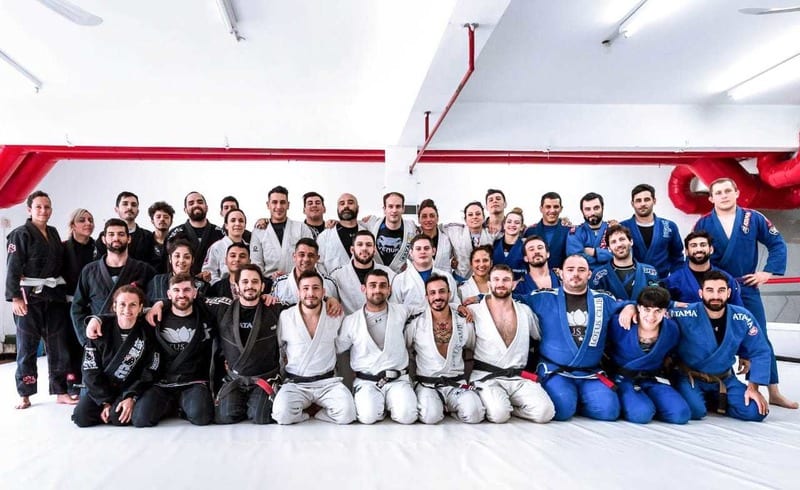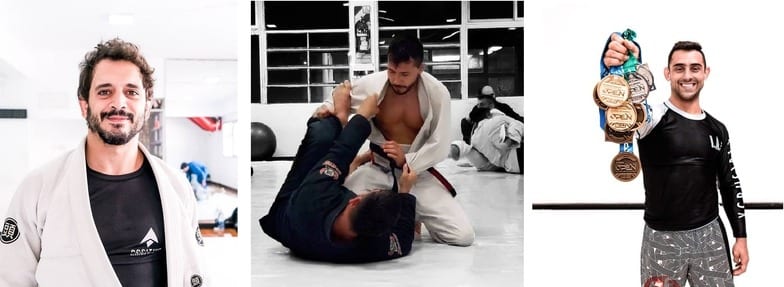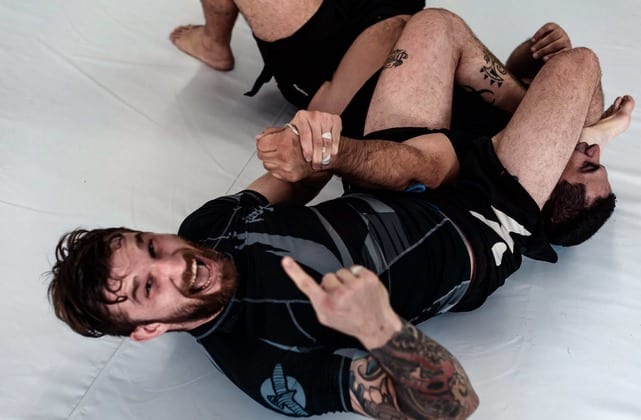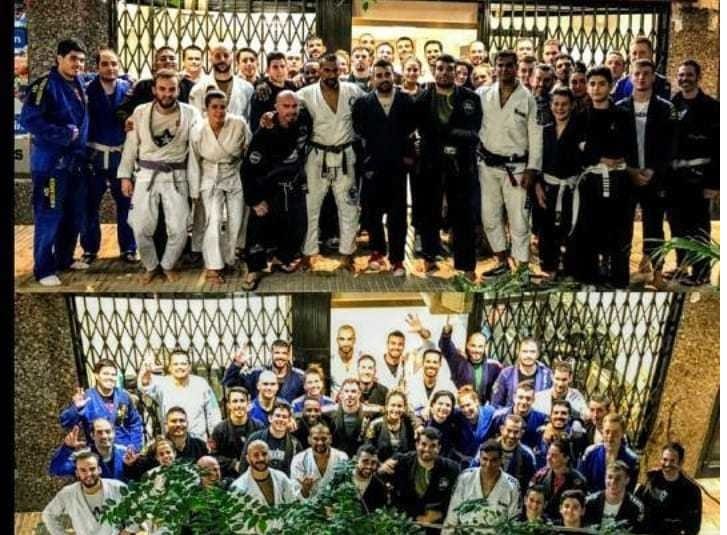Featured affiliated academy: Positive Jiu-Jitsu Buenos Aires

Where is the gym located?
Our gym is located in First Club, in the neighborhood of Caballito at the heart of Buenos Aires city, Argentina.
How many people train there?
We’re about 50 people training in the academy between the competitors and the beginners.
Is Positive Jiu-Jitsu Buenos Aires growing – if so by how many new members each month or year?
Last January we started a new course, “Introduction to Jiu-Jitsu”, where we focus on the basics and the self-defense point of view, which added 10 new members!
What are the highest and lowest belt grades training?
There are total newbies that are starting their martial arts trip, jiu-jitsu newbies with background in other martial arts, and on the other side we have professional jiu-jitsu athletes and mma fighters, most of them black belts.
When did the gym open?
We started Positive Jiu-Jitsu in May 2018.

Some facts about you:
Name: Pablo Peirone / Walter Alamo / Francisco Cuneo
Age: 37 / 31 / 34
Belt: Black / black / black
Academy: Positive Jiu-Jitsu Buenos Aires
Profession: Jiu-jitsu professor / digital marketing specialist / financial consultant
Years in BJJ: 12
Other martial arts: Judo, wrestling
Currently living in: Buenos Aires, Argentina and New York, USA
Originally from: Buenos Aires, Argentina
Please tell us the story of how your gym came into existence:
We conducted our training in Jiu Jitsu under the tutelage of Ricardo De La Riva, under whom we graduated to black belt in 2016.
In 2018, we decided to start a new path, under the name of Positive Jiu Jitsu, registering the academy in the main federations and achieving independence in that way. In just 2 years we’ve reached important podiums in the main tournaments (IBJJF Worlds, UAEJJ Grand Slam, and AJP Tour).
Tell us about the people that train in Positive Jiu-Jitsu Buenos Aires – who are they?
They’re regular people with regular lives – students, moms, dads, teenagers, athletes, and professional fighters. We welcome every type of person, and give them through Jiu-jitsu a place and a vehicle to walk through life and express themselves in their own unique ways.

Why do they train?
The common aspect that defines the people that train at Positive is the love for Jiu-jitsu and the aim to be better and overcome our challenges and difficulties.
What are some of the challenges of running a BJJ gym in general and in your location specifically?
The greatest challenges are the sedentary way of life we have as a society, and then the anxiety of “being good” at any activity in just a few classes. Jiu-jitsu is really difficult, and it demands discipline and consistency. In our area specifically, the economic situation of the country is tough, so sometimes people have a hard time finding a way to pay for tuition.

How do you see the future for BJJ in your area?
Argentina has an excellent level of Jiu-Jitsu, with a lot of top guys getting good results on the international circuit. I see a very bright future for Argentine Jiu-Jitsu in general. Just in Buenos Aires city you can find dozens of academies lead by black belts spreading the word all over the country and the globe.
What’s the best thing about your gym?
First Club is a great place. Besides Jiu-Jitsu there are other activities and sports, suitable for all and family-oriented. There’s a gym where you can complement your Jiu-Jitsu by lifting weights. And we have sauna in the men’s locker room as well as in the women’s; great for relaxing the body after a tough training session.
What would you recommend Globetrotters to see in your area apart from the inside of your gym?
Buenos Aires is one of the capital cities of the world and one of the largest cities in South America, with a European flavor.
There are tons of touristic attractions such as La Boca, tango lessons, and Argentine BBQ. Buenos Aires is also the city with more cafés in the world, with different options that range from the more traditional like Café Tortoni to the more modern and younger styles in Palermo. Besides that, you have the connections to the other Argentine provinces and a great public transport system.















